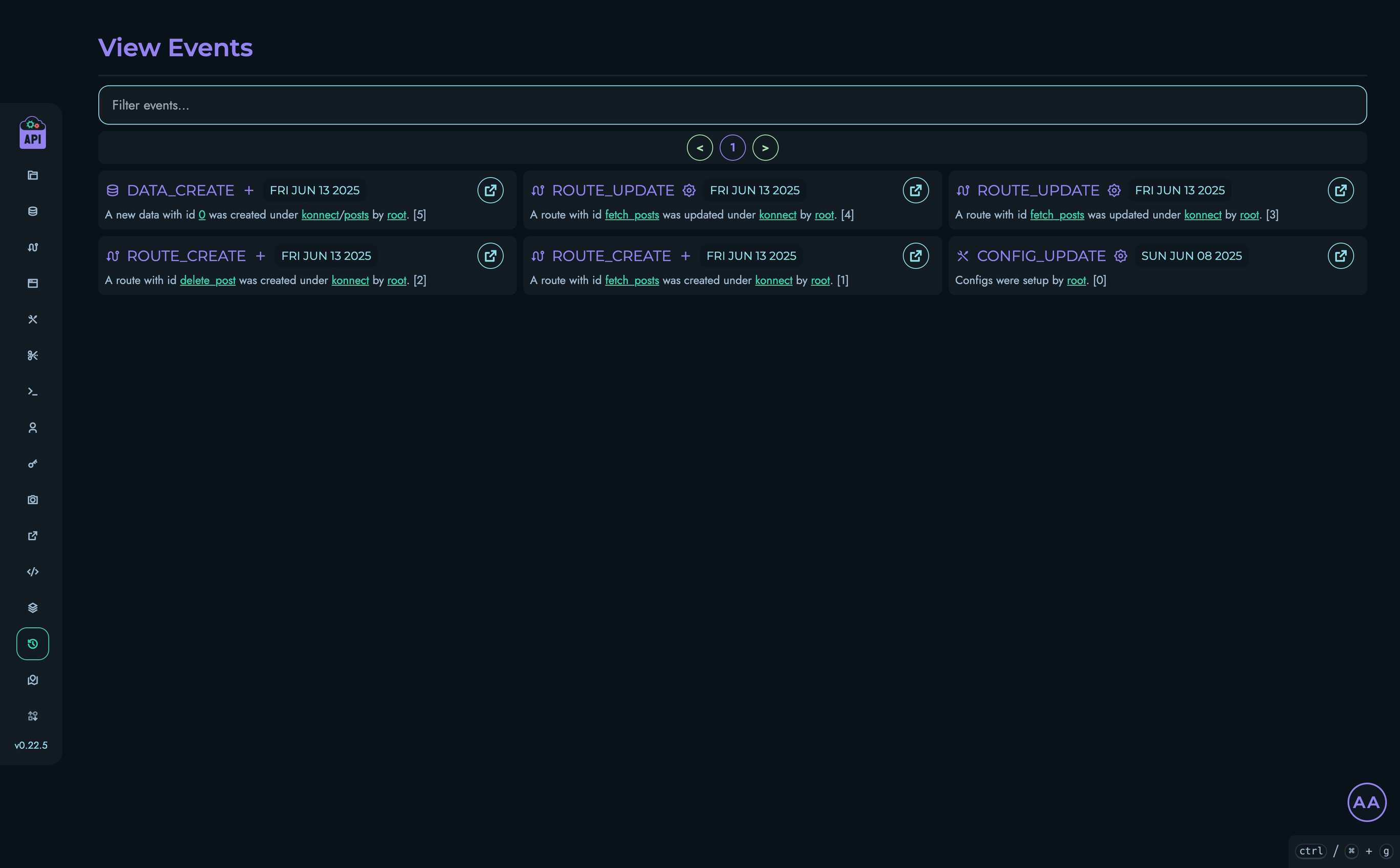Events
The Events page in Kinesis API provides a comprehensive audit trail of all significant actions that occur within your system. This powerful monitoring tool helps administrators track changes, troubleshoot issues, and maintain accountability across the platform.
Access Control
Important: The Events page is only accessible to users with ROOT or ADMIN roles. Other users attempting to access this page will be redirected to the dashboard.
Accessing the Events Page
To access the Events page:
- Log in with a ROOT or ADMIN account
- Navigate to
/web/eventsin your browser or use the navigation menu
Understanding Events
Events in Kinesis API represent significant actions that have occurred within the system. Each event captures:
- Event Type: The category and specific action (e.g.,
user_create,data_update) - Timestamp: When the action occurred
- Description: Details about what happened, often including references to specific users, projects, or collections
- Redirect Link: A direct link to the relevant page in the system
Events serve as an audit trail, allowing administrators to track who made changes, what was changed, and when those changes occurred.
Events Interface

The Events interface includes:
- A filterable, paginated list of events
- Events displayed in reverse chronological order (newest first)
- Visual icons representing different event types
- Links to related pages for further investigation
Types of Events Tracked
Kinesis API tracks events across all major system components:
User Events
- Account creation and registration
- Role changes
- Account deletion
- Password reset requests
Configuration Events
- Configuration creation
- Configuration updates
- Configuration deletion
Project Events
- Project creation
- Project updates (name, description, API path)
- Project deletion
- Member addition/removal
Collection & Structure Events
- Collection creation/deletion
- Structure creation/deletion
- Custom structure operations
Data Events
- Data creation
- Data updates
- Data deletion
- Publishing status changes
API Routes Events
- Route creation
- Route modifications
- Route deletion
System Events
- Constraint modifications
- Personal Access Token management
- Redirects management
- Code snippet management
Filtering and Navigating Events
Event Filtering
To find specific events:
- Use the search box at the top of the events list
- Type any part of the event description, event type, or redirect path
- The list will automatically filter to show matching events
Pagination
For systems with many events:
- Navigate between pages using the pagination controls
- The page displays up to 42 events at a time
Understanding Event Information
Each event entry contains several key pieces of information:
- Event Type Icon: Visual representation of the event category
- Event Type: The specific action that occurred
- Timestamp: When the action took place
- Description: Details about the event, including:
- User references (highlighted with username)
- Project references (highlighted with project ID)
- Collection references (highlighted with collection ID)
- Navigation Link: Button to go directly to the relevant page
Event Retention
Events are stored permanently in the system database to maintain a complete audit history. The events page implements pagination to handle large numbers of events efficiently.
Common Use Cases
The Events page is particularly useful for:
- Security Monitoring: Track user creation, role changes, and password resets
- Troubleshooting: Identify when and how changes were made that might have caused issues
- User Activity Tracking: Monitor which users are making changes to the system
- Audit Compliance: Maintain records of all system changes for compliance requirements
- Change Management: Verify that planned changes were implemented correctly